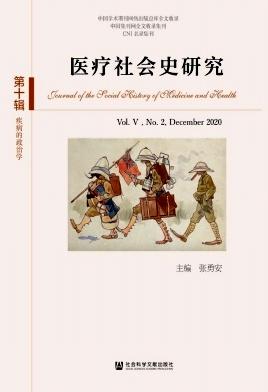On display: portraits of seventeenth-century French men-midwives.
引用次数: 2
Abstract
This article examines the portraits of seventeenth-century French accoucheurs [men-midwives] that regularly appeared as the first plate in their obstetrical treatises, representing the body from which the text had issued. It argues that these visual documents were forms of strategic display in keeping with the wider goals of the treatises--to present their authors as cultivated, skilled, and vastly experienced experts in childbirth. At a time when the visual evaluation of character was commonplace within medical and other contexts, author portraits presented the public image of accoucheurs. Before analysing the idealized images of men-midwives. however, the article explores the author portrait of Louise Bourgeois, royal midwife to Queen Marie de Médicis from 1601-9, and the first French woman to write obstetrical treatises. Bourgeois is portrayed not only as an exceptional practitioner granted royal favour, but also as a hybrid figure whose identity fluctuated between efficient female midwife and educated theoretical writer. Portraits of accoucheurs represent the unstable identity and rather flexible 'masculinity' of male practitioners who likewise blurred gendered categories. Some images identify male practitioners exclusively with theoretical knowledge, while others associate them more directly with the maternal qualities traditionally admired in female midwives.展出的是十七世纪法国男助产士的肖像。
这篇文章研究了17世纪法国助产士的肖像,这些肖像经常出现在他们的产科论文的第一页,代表了文本发布的身体。它认为,这些视觉文件是与论文更广泛的目标保持一致的战略展示形式-将其作者呈现为有教养,熟练且经验丰富的分娩专家。当时,在医学和其他背景下,对性格的视觉评价是司空见惯的,作者肖像呈现了会计师的公众形象。在分析男性助产士的理想形象之前。然而,这篇文章探讨了作者路易丝·布尔乔亚的肖像,她是1601年至1609年玛丽·德·姆萨迪西斯王后的皇家助产士,也是第一位写产科论文的法国女性。布尔乔亚不仅被描绘成一个获得皇室青睐的特殊从业者,而且还是一个身份在高效的女性助产士和受过教育的理论作家之间波动的混血儿。按摩师的肖像代表了男性从业者不稳定的身份和相当灵活的“男子气概”,他们同样模糊了性别类别。有些形象认为男性从业者只具备理论知识,而另一些形象则更直接地将他们与女性助产士传统上所钦佩的母性品质联系在一起。
本文章由计算机程序翻译,如有差异,请以英文原文为准。
求助全文
约1分钟内获得全文
求助全文

 求助内容:
求助内容: 应助结果提醒方式:
应助结果提醒方式:


